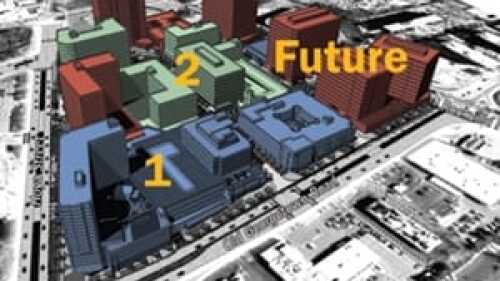Community and Neighborhood Development
Age segregation is a silent and growing problem in the United States of the 21st century. In Portland, Oregon, a nonprofit organization has built an urban solution that addresses the problem of age segregation while brightening the prospects of families who adopt children out of the foster care system.
The built environment is having a critical impact on the physical and emotional well-being of residents and workers, said Richard Jackson, professor and chair of environmental health sciences at the University of California at Los Angeles Fielding School of Public Health, speaking to a group of land use, urban design, and community development experts in Washington, D.C.
On a sunny but bone-chilling windy day in late March, with the Rocky Mountain foothills flanking their views to the west, seven members of a ULI Advisory Services panel listened to the whistle of a freight train as it made its way slowly through the heart of Olde Town Arvada, Colorado, about seven miles (11.3 km) northwest of Denver. Their task: envisioning how changes to the physical environment could improve the health of Arvada residents.
A walk down Main Street in Lamar with a late winter storm blowing in tells a lot about the challenges of trying to exercise in this rural city on the southeastern Colorado plains. Conditions may include 50-mile-per-hour (80 kmph) sandstorms, 18-wheelers blasting past at similar speeds, and for pedestrians, a dangerous situation caused by the lack of sidewalks, bike lanes, and safe crossings on this five-lane roadway, which also serves as U.S. Highway 50/287.
Improving the quality of life—and cutting red tape—are cited as key to attracting “the smart money.”
In a recent New Yorker article, “Adaptation: How Can Cities Be ‘Climate-Proofed’?,” sociologist Eric Klinenberg points out that much of the discussion around resilience focuses on physical infrastructure, when social infrastructure can play an equally important role in how well a community survives a natural disaster.
The Atlantic Yards project in Brooklyn has gone through the usual tortured process of redevelopment in New York City. But there’s another component of the massive project that is most worthy of attention for what it says about state-of-the-art housing construction: the world’s tallest modular building.
Special assessments, which tie property taxes directly to benefits, are being used in some of the country’s highest-profile transit projects.
Leveraging city, county, community college, and private investment and using a form-based code, the Airport Boulevard project in Austin, Texas, is a model for corridor redevelopment worth emulating.
Walking and bicycling provide many benefits—reduced air pollution, improved public health, decreased dependence on foreign oil—but federal funding for nonmotorized transportation is now in jeopardy.









